Lighting performs an important position in images. It can deliver a photograph to life, it may generate results, together with spectacular shadows or silhouettes, or it might have a distinctly adverse affect by creating undesirable glare and reflections.
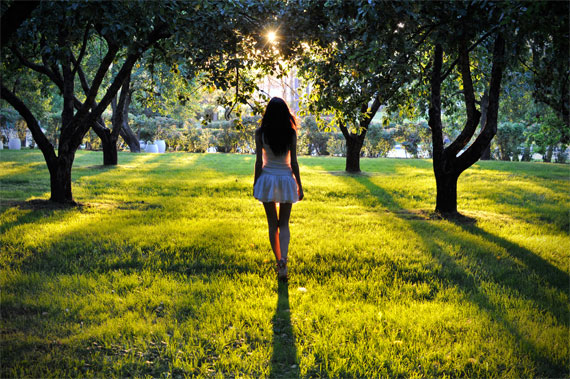
“Following the Sun” captured by PictureSocial member Irina Oreshina
This is a fast information to introduce the newbie to one of the necessary points in images: lighting. The information is damaged down into three elements. Part M talks about onerous and smooth mild, half P seems at pure and synthetic mild, and half A examines mild depth and depth of area.
Part M: Hard and Soft Light
This first part examines probably the most elementary points: the distinction between capturing in arduous and mushy mild.
Hard mild produces nicely-outlined, darkish shadows and tends to originate from a single mild supply, which is often both small or situated distant. By distinction, smooth mild produces both gentle shadows or no shadows in any respect. It might be generated from a number of mild sources, by diffusing mild utilizing some sort of barrier (e.g., a diffuser and even only a sheet of paper), or by reflecting mild off of various surfaces in order that the topic is hit from numerous angles. In pure lighting circumstances, exhausting mild is produced on a sunny day when there’s little or no cloud cowl, and when the solar is excessive within the sky—which is one thing that’s usually to be prevented, notably by newbies. Shooting in other forms of climate, reminiscent of cloudy days, foggy circumstances, and even when there’s air air pollution, will produce gentle mild, because the solar’s rays are mirrored or subtle by the particles within the air (moisture, air pollution, and so on.).
In basic, the dimensions of the sunshine supply is inversely proportional to the hardness of the sunshine, which means that smaller mild sources produce more durable mild.
Soft mild, then again, might be created utilizing reflectors or diffusers:
Reflectors: The motion of reflecting mild primarily turns the reflector right into a secondary mild supply. All sorts of issues can be utilized as reflectors, whether or not capturing indoors or outside. These embrace skilled reflectors or simply sheets of paper.
Diffusers: In pure lighting circumstances, clouds are nice examples of diffusers. In synthetic lighting circumstances, any semi-clear materials that diffuses or softens the sunshine can be utilized. Lamp shades are an amazing instance of sunshine diffusion. When capturing, even a skinny white material can be utilized.
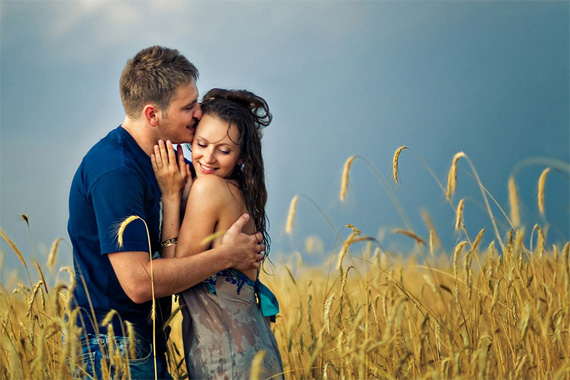
“Fields of Love” captured by PictureSocial member Alexei Demin
Both kinds of mild have their very own benefits and drawbacks. Hard mild can be utilized to create pictures with sharp distinction and highlights, emphasizing form and texture. It can be utilized to reinforce the 3D impact of a picture and usually to create dramatic results. However, arduous mild is troublesome to work with, and it’s usually thought-about unsuitable for a lot of—if not most—conditions, notably when photographing individuals.
Soft mild, against this, creates lighting that’s extra even, which higher depicts the colours and shapes of the topic. The selection of which sort of sunshine to make use of is dependent upon the kind of images, the topic, and the specified impact, however delicate mild is often the popular selection, and it’s definitely the most secure selection for freshmen.
Part P: Artificial vs. Natural Light
Natural mild refers to daylight/daylight, whereas synthetic mild refers to all types of sunshine sources, together with fluorescent lights, electrical lights, flash, and so forth. I will talk about the variations between a lot of these mild sources under.
Natural mild
Natural mild is much less controllable, and it varies enormously relying on quite a few circumstances resembling time of day, season, climate, and geographical location. To its credit score, it doesn’t require any gear aside from something that you could be select to make use of as a diffuser, reflector, and so on. The selection between utilizing pure or synthetic mild is clearly extra related for portrait or nonetheless life images than it’s for panorama or wildlife images (the place your selection is often restricted to pure mild).
These are some elements that have an effect on pure mild:
- Weather. For instance, a cloudy day generates smooth mild and is often most popular in images, as talked about earlier. By distinction, sunny lighting circumstances yield more durable, brighter mild with shadows which are extra outlined. However, this simply scratches the floor. Cloud cowl is nearly by no means even, and this results in various patterns within the depth of sunshine, each because it shines on objects and within the sky. Weather phenomena, comparable to storms and fog, additionally alter the depth and colour of sunshine. This can create photographs that adjust from being completely unusable to distinctive photographs with spectacular results. By softening the distant segments of a picture, water vapor within the air generates a greater really feel of depth in panorama images and sometimes improves perspective.
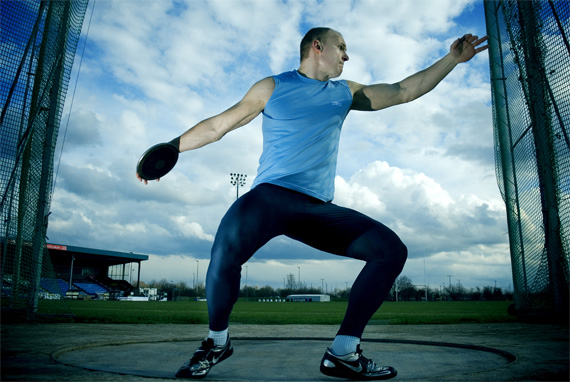
“You know your the perfect!” captured by PictureSocial member Robert Nemeti
- Time of day. You can often get softer lighting circumstances early or late within the day. This mild is usually hotter, producing pictures with much less distinction in comparison with when the solar is excessive up within the sky. Sunrise and sundown are sometimes thought-about preferrred occasions for images, notably for landscapes and portraits. This time of day is known as the golden hour. During this time of day, the lighting circumstances change quickly, each when it comes to depth and shade, and permit for capturing photographs which might be much more assorted, typically inside the area of minutes. Shadows additionally change in form and darkness, because the solar units or rises, turning into longer and lighter because the solar units and vice versa.
- Location. In basic, the additional you’re from the equator, the extra time it takes for the solar to climb or set. Therefore, the gentle mild circumstances discovered within the early morning and late night can final for much longer in such areas, and conversely, they cross a lot quicker when in shut proximity to the equator.
- Air air pollution.Similar to mist and clouds, air pollution acts as a diffuser of daylight because the beams of sunshine are mirrored and scattered by the airborne particles.
Artificial Light
The challenges of utilizing pure mild are fairly just like these confronted when capturing in synthetic mild. You should nonetheless perceive how numerous mild sources act upon a topic and the best way to produce the specified impact. Different sources of sunshine can produce tender or exhausting mild when capturing in a studio, however on this case, the photographer has direct management over parts resembling hardness, distance, depth, and angle. Furthermore, synthetic mild from totally different sources yields totally different shade warmth signatures. For occasion, halogen bulbs are colder and produce a light-weight that’s blue in shade, whereas tungsten bulbs, being hotter, produce mild with a reddish hue.
Keep in thoughts that once you use totally different sources of synthetic mild, these should produce the identical shade warmth signature. The solely exception to that is for those who’re capturing in black and white.
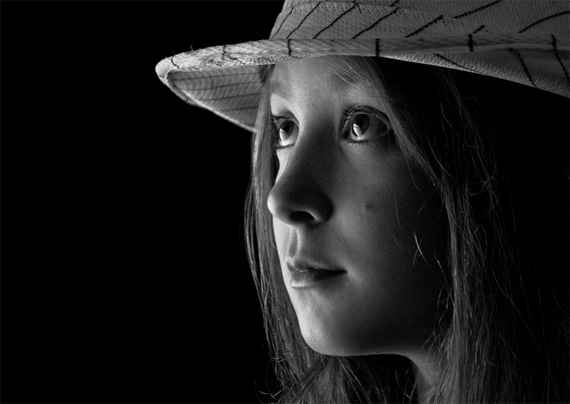
Photo captured by PictureSocial member Natasa Bencic
When it comes right down to controlling and manipulating mild, there are various choices inside images, whether or not you’re coping with synthetic, pure, tender, or onerous mild. It comes right down to understanding how pictures are affected by totally different lighting circumstances, establishing the specified lighting surroundings, adjusting your digital camera settings (e.g., the white stability), and submit-processing your image in packages akin to Gimp or Photoshop.
Part A: Light Intensity & Depth of Field
In this last part, I will talk about the importance of sunshine depth in images and what learners have to find out about it.
When capturing a photograph, a specific amount of sunshine is required by the digital camera to create an image on the digital sensor. The ISO (or chip sensitivity), the aperture setting, and the shutter velocity decide the quantity of sunshine that’s required.
You can shoot pictures in very totally different lighting circumstances. Shooting landscapes on a sunny day usually means capturing with a excessive depth of sunshine. While many learners are likely to assume that these are splendid circumstances, capturing with excessive mild depth typically yields footage with low element and excessive distinction, which ought to usually be prevented. Conversely, a cloudy day generates subtle mild with a decrease depth, which both casts faint or no shadows. It additionally smooths gradients, improves colour accuracy, and preserves texture. When capturing in darkish circumstances the place there’s little or no mild, a excessive ISO setting (see under) and/or lengthy shutter velocity is required.
ISO
ISO is a score of the sunshine sensitivity of the digital digital camera’s sensor. In most cameras, this sometimes ranges from one hundred-12,800, with these numbers signifying the extent of amplification that the sensor applies. Lowering the ISO settings will yield an image with much less “noise,” however it’s going to additionally require extra mild, and therefore an extended publicity time. Increasing the ISO setting will make the sensor amplify the sunshine, thereby permitting photographs to be taken in darker circumstances. However, greater ISO settings carry the disadvantage of manufacturing extra noise and resulting in an image that may seem grainy.
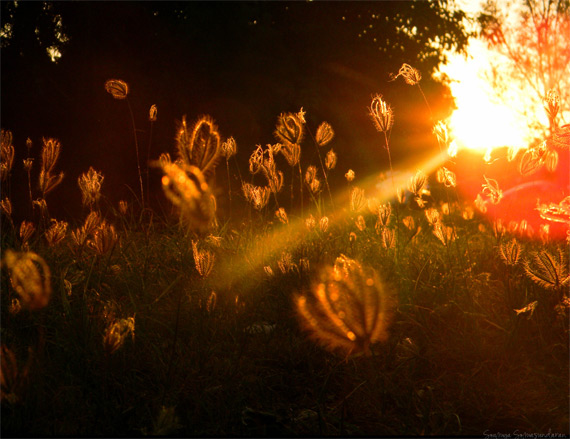
Photo captured by PictureSocial member soumya somasundaran
The measurement of the sensor within the digital camera performs an important position, with bigger sensors producing much less noise and therefore higher photographs. However, the price of cameras with giant sensors can also be considerably larger.
Shutter Speed
When taking an image, the shutter in entrance of the sensor is opened to permit mild to succeed in it. The longer this shutter is left open, the extra mild will enter. When capturing shifting topics, excessive shutter speeds are required in order to scale back the quantity of motion through the time that the shutter is open. This will allow freezing the item as it’s shot and taking hand-held photographs.
Long shutter speeds are helpful at night time when the digital camera requires extra mild to create the image. For this cause, capturing at night time will create extra noise and subsequently is improved by added digital camera stabilization (resembling through the use of a tripod).
Aperture
Aperture is the opening within the lens by means of which mild travels. The aperture measurement is diversified utilizing a tool referred to as the diaphragm. A smaller aperture permits much less mild by means of the lens and, conversely, a bigger aperture permits extra mild to succeed in the sensor. Aperture settings are referred to as f/stops. The smaller numbers (resembling f/M.zero to f/A.H) signify the most important aperture opening and permit probably the most quantity of sunshine to the sensor. Conversely, a worth of f/22 decreases the aperture measurement and permits far much less mild to cross by means of the lens. Each lens has a unique vary of aperture settings.
A photograph’s depth of subject (DoF) can also be managed by the aperture setting. DoF represents the space between the closest and the farthest level at which the picture seems to be in focus.
Automatic Mode
In absolutely automated mode, the aperture/shutter mixture is chosen by the digital camera, based mostly on its notion of probably the most appropriate settings for taking the photograph. This can produce respectable outcomes, however it’s an approximation and infrequently on par with footage taken manually by a proficient photographer. However, for a newbie utilizing this mode, the digital camera will deal with the settings at any given mild depth, and the one problem left is to stabilize it when capturing in low-mild circumstances (i.e. utilizing a tripod or monopod).
Taking Control of the Camera
You can use the totally different digital camera modes relying on the type of photograph that you simply’r aiming for. The commonest are shutter precedence, aperture precedence, and full guide mode (for extra skilled photographers).
The aperture settings may be chosen in aperture precedence mode, for instance, should you want to seize a sure DoF. In this mode, the right shutter velocity is calculated by the digital camera. In panorama images, that is often the popular mode.
In shutter precedence mode, you select the publicity time. When capturing shifting topics, comparable to in sports activities images, selecting a excessive shutter velocity is essential in order to freeze the topic. When capturing in night time circumstances, selecting a sluggish shutter velocity is important so the sensor is ready to acquire sufficient mild. It is equally essential when the digital camera is hand-held.
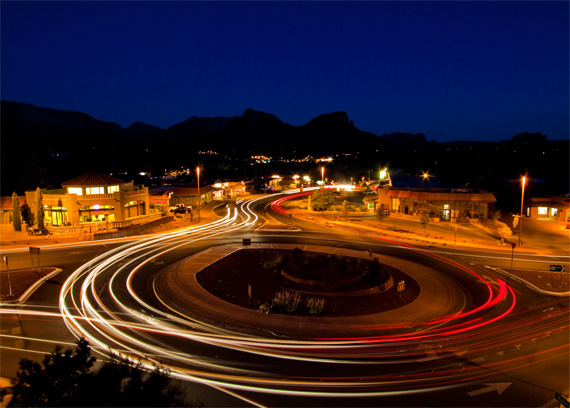
“Sedona at Night P” captured by PictureSocial member DJK
The photographer has full management of each the shutter and aperture settings in full guide mode. This allows an expertise photographer, who understands the impact of those settings, to exactly management the best way every picture is captured.
About the Author:
I have been a photographer since 1998. In the previous, I have labored with business images, photographing merchandise for an area studio. I have additionally been concerned with weddings shoots, and different varieties of gatherings. I have additionally shot photographs for a number of websites together with: Bluewyle Border Collies, World Sufi Foundation, and Globalphrase Ltd. Currently, I run the Eminent Photo images weblog.
I presently use a Canon 7D with a Sigma DG one hundred twenty-400mm M:A.H-H.S APO HSM lens or a Sigma 28-70mm B:P.H EX DG lens.
Go to full article: A Beginning Photographer’s Guide to Light
What are your ideas on this text? Join the dialogue on Facebook
Article from: PictureCorrect
The publish A Beginning Photographer’s Guide to Light appeared first on PictureCorrect.